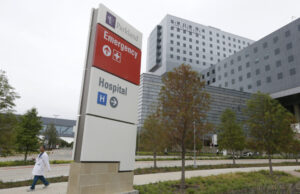Parkland Trauma Index of Mortality

The Parkland Trauma Index of Mortality machine learning algorithm is the only known model that uses electronic medical record data to predict ―every Hour ― 48-hour mortality during the first 72 Hours of hospitalization, thus evolving with The patient’s physiologic response to trauma.
 The Parkland Trauma Index of Mortality (PTIM) is a realtime predictive model of in-hospital mortality assessment of trauma patients for clinical decision support. Most deaths due to trauma will occur in the immediate aftermath of the injury –in the critical first hours and days of an admission.
The Parkland Trauma Index of Mortality (PTIM) is a realtime predictive model of in-hospital mortality assessment of trauma patients for clinical decision support. Most deaths due to trauma will occur in the immediate aftermath of the injury –in the critical first hours and days of an admission.
This model was developed because provider teams needed a dynamic tool to estimate patient mortality risk for prioritization of interventions as the teams must make many consequential decisions about trauma care in rapid succession; i.e., when to stabilize versus intervene, how to sequence interventions, etc. In many cases, these decisions can feel like equal parts instinct, art, and science. Prior industry models provided only a static, one-time score at the time of admission.
First developed in conjunction with Parkland stakeholders and deployed in mid-2019, the model is currently operational in real-time and is integrated with the Electronic Health Record (EHR) system at Parkland, where it is used as one of the clinical decision support tools at Parkland’s level 1 trauma center. In addition to its ability to evolve with the patient’s physiologic response, the model requires no input from clinicians, relying solely on data present in the EHR. The model scans the HER for the preceding 12 hours and gives a mortality prediction for the next 48 hours, thus providing a more clearly defined description of mortality risk. In addition, it has demonstrated an excellent ability to discriminate mortality and to sort patients into low-risk and high-risk groups.
PTIM has the potential to make an enormous impact on trauma centers to better patient care, especially in the first 72 hours, when many of the critical-condition patients (from motor vehicle accidents or other traumatic events) arrive at hospitals with no identification and little to no information about their past medical histories.
